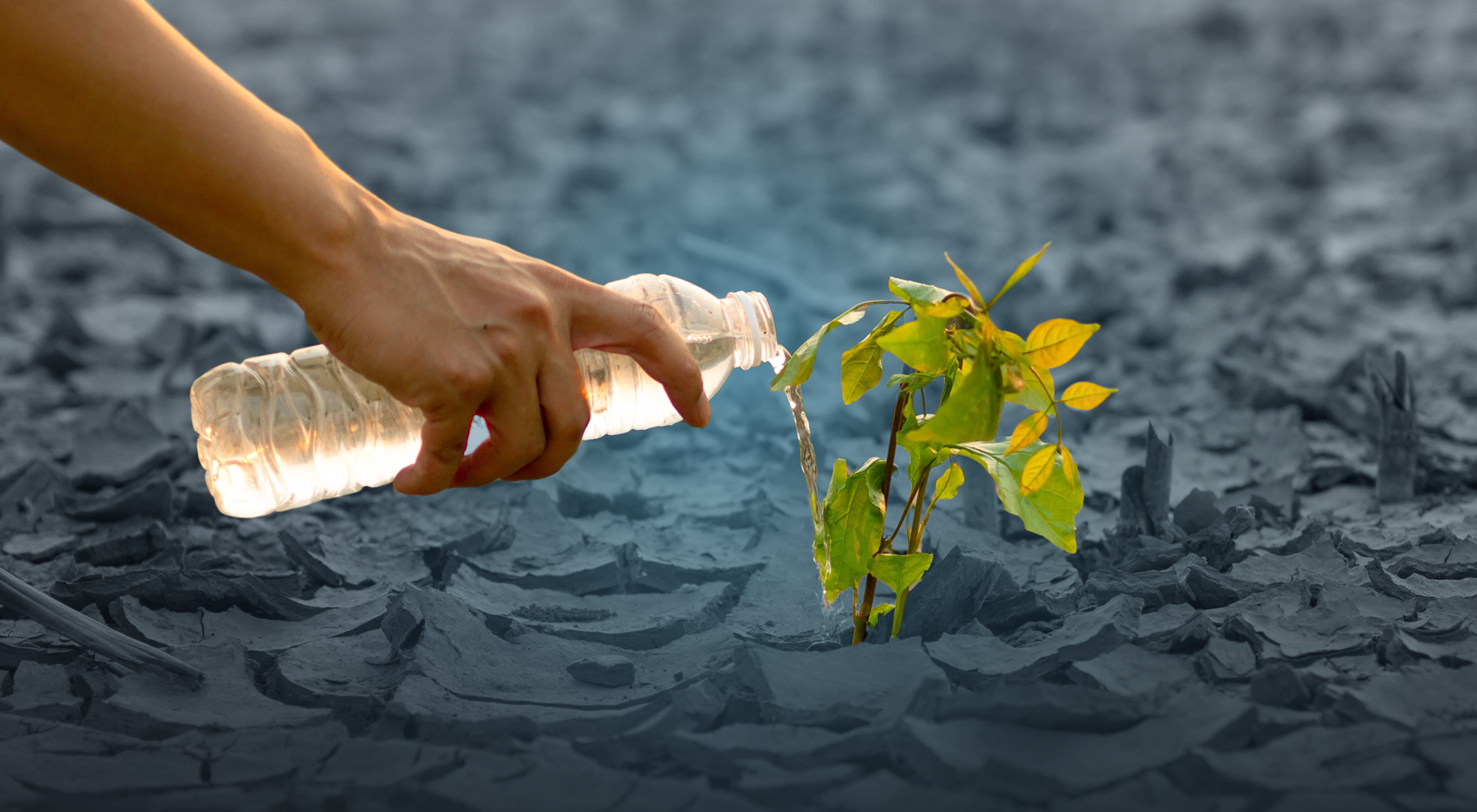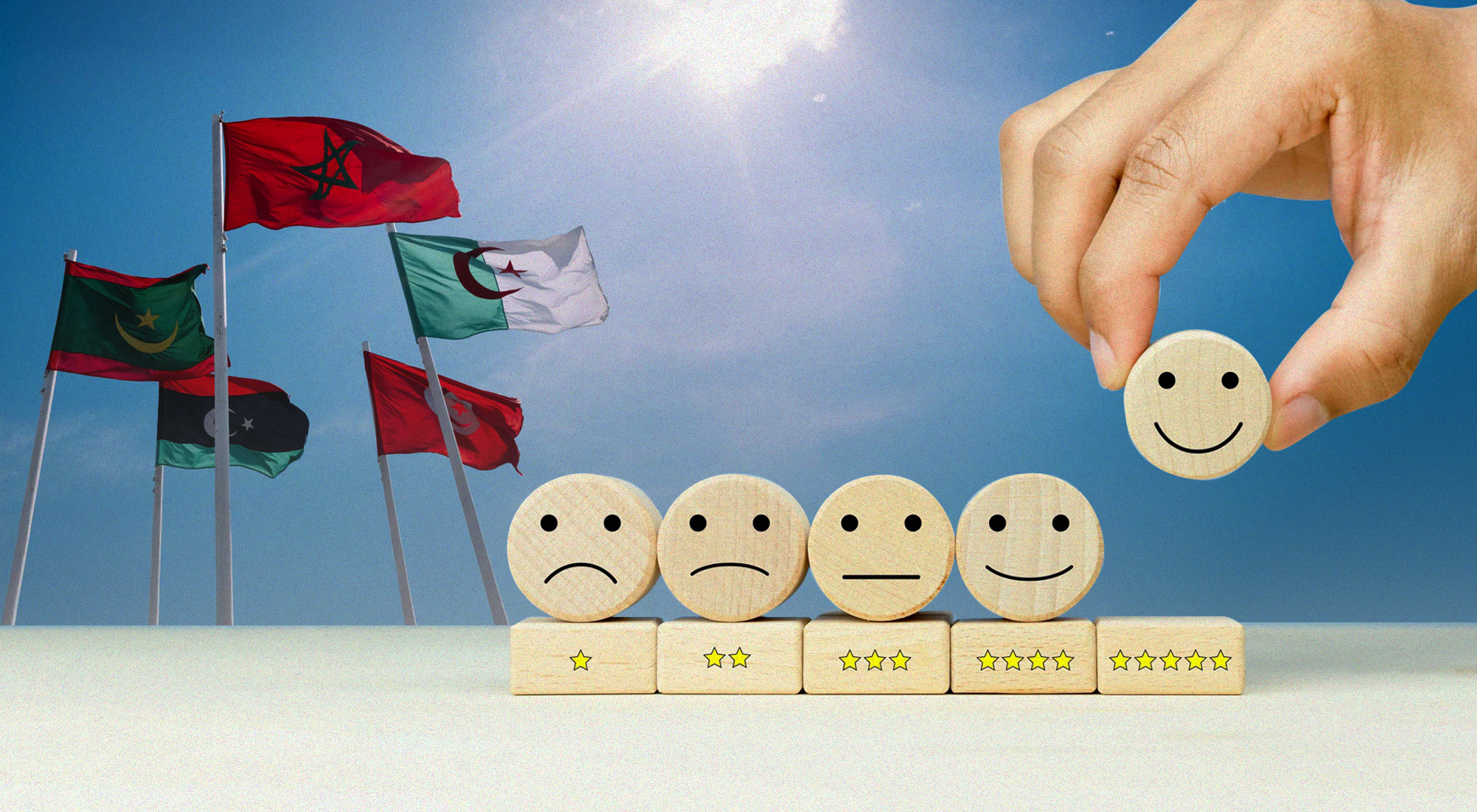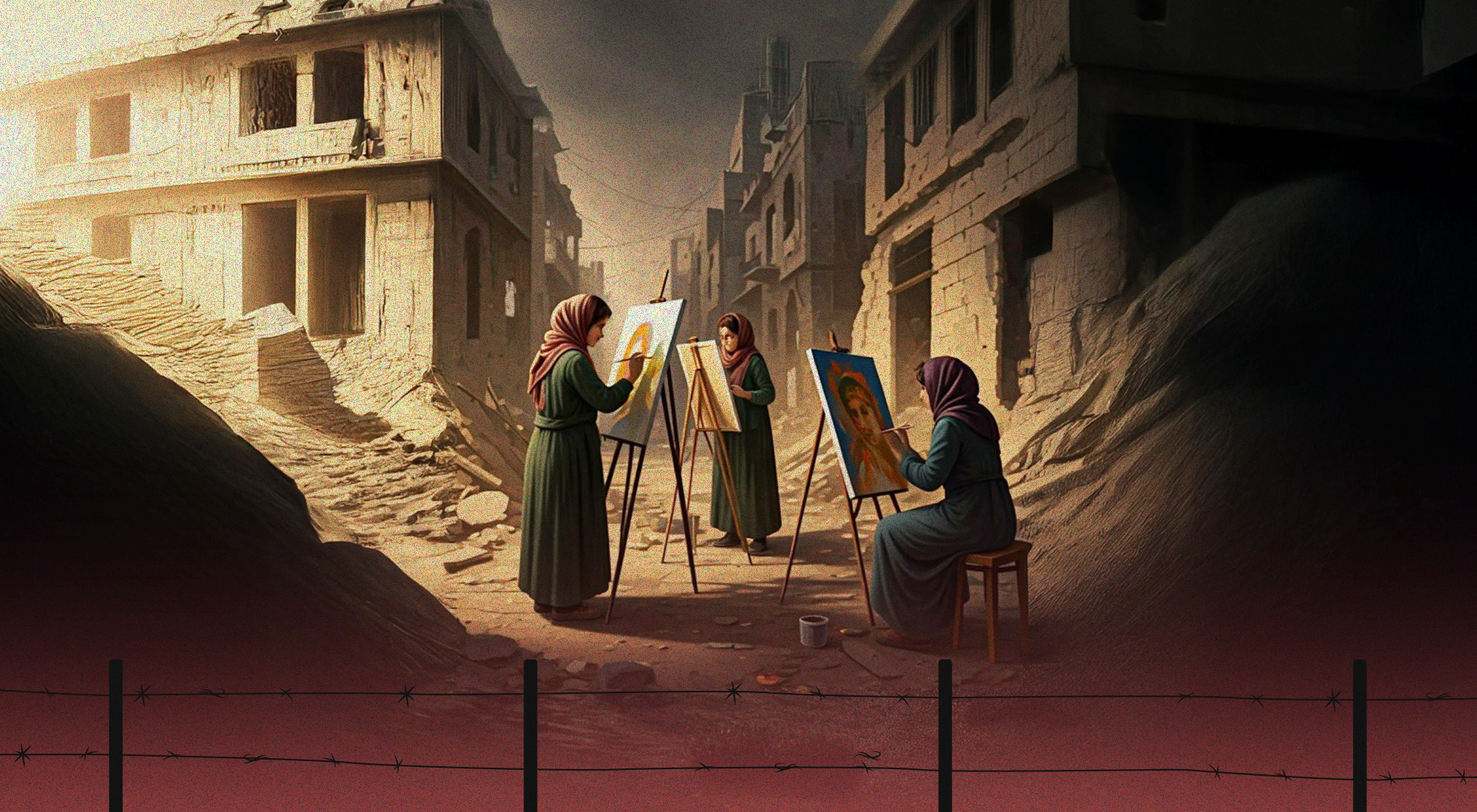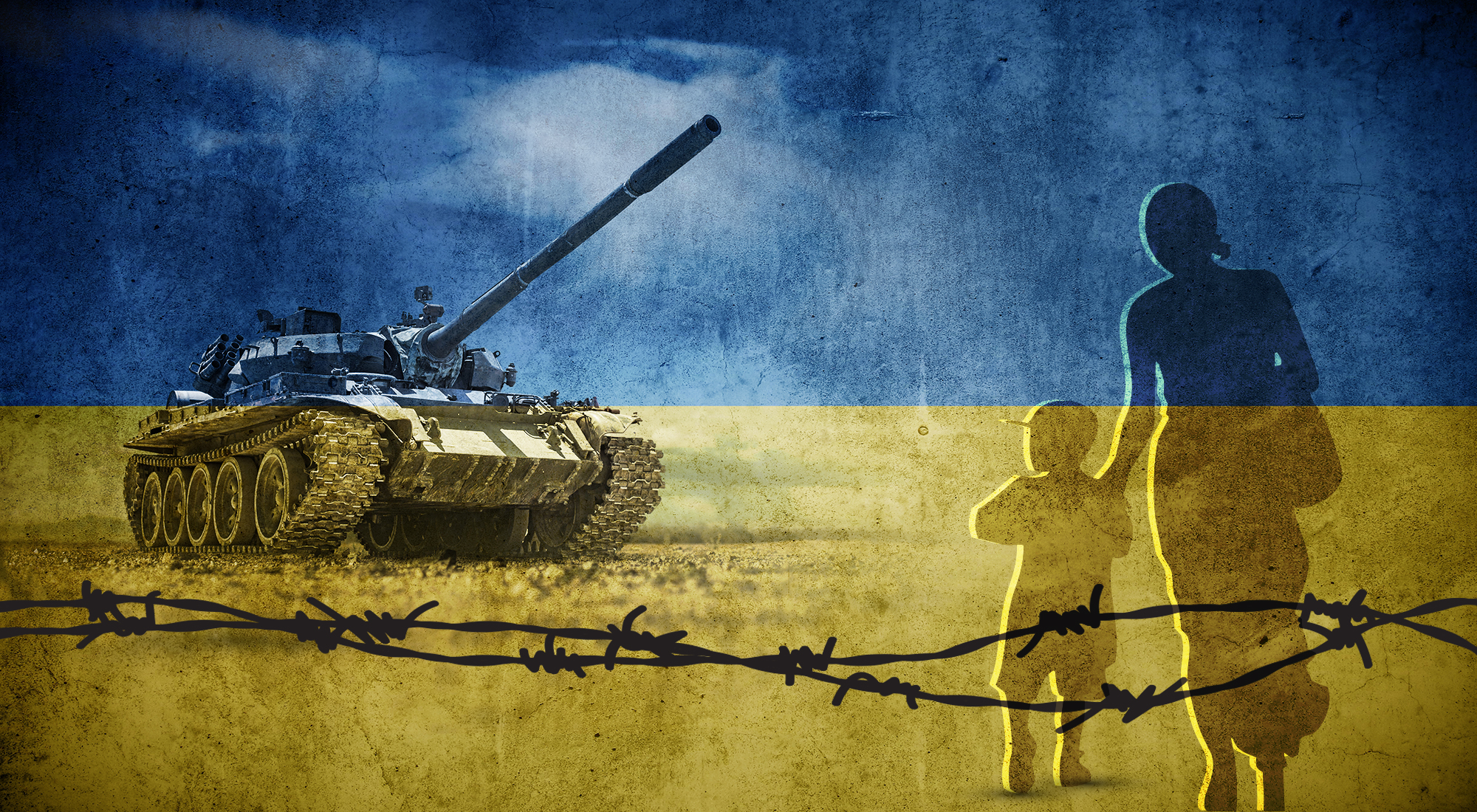Introduction
While many in the media have been quick to compare today’s COVID-19 vaccine race between the United States and China to that of the Cold War space race in the mid-20th century, there remains distinct variations from the 1960’s to today on what constitutes end-game triumph. The space race between the Americans and the USSR was a relentless battle based on maintaining competitive edge in technological superiority. Victory in space during the Cold War became symbolic of one’s hegemonic power and incontestable global supremacy. ‘From the beginning, the Space Race was an extension of this ideological battle between the two nations. Space became the final frontier for the United States and Soviet Union to compete to prove their status as sole superpower.’[1] While the fierce competition today between the United States and China in general does have origins in their desires to dominate globally, the countries varying stances towards COVID-19 vaccine diplomacy has more to do with global influence and geopolitical motivations.
Prior to taking office in January 2021, US President Joseph Biden campaigned on a resurrection of American global leadership, in particular his commitment to global COVID-19 vaccine distribution, recently affirming ‘America will be the arsenal of vaccines in our global fight against COVID-19, just as America was the arsenal of democracy in World War II.’[2] To date the US has distributed 110 million vaccine doses to 60 countries across the globe and additionally promised to purchase half a billion doses of the Pfizer vaccine for low and middle income developing countries. By leading the global response in vaccine allocation, the Biden Administration aims to revitalize the domestic and international economy while curbing the trajectory of the pandemic to maximize global public health and security – a cornerstone of U.S. democratic principles of good governance while ensuring the protection of universal human rights.
An additional pledge from the new Biden Administration was a return to multilateralism – a stark reversal from his predecessor – particularly in collaborating with its allies and global leaders to ensure even the poorest of nations have equitable access to safe and effective COVID-19 vaccines. Following the G7 summit earlier this year, the group pledged its commitment to donate 870 million COVID-19 vaccine doses to COVAX, an organization established in part by the World Health Organization (WHO) & Gavi-The Vaccine Alliance to ‘accelerate the development and manufacture of COVID-19 vaccines.’[3] COVAX vaccine donations are intended to be distributed to vulnerable countries who do not have the same resources as wealthy nations to secure vaccines for their populations. Speaking on behalf of the G7 announcement, Dr. Richard Hatchett, CEO of the Coalition for Epidemic Preparedness Innovations stated, ‘this pandemic has shown us that we cannot set national against international interests. With a disease like COVID-19 we must ensure that we get it under control everywhere. There is still much to do to get vaccines in arms and ensure our R&D allows us to stay one step ahead of the virus. But for today we give pause and celebrate a watershed moment of political alignment and collaboration.’[4]
China, for its part has provided nearly 600 million COVID-19 vaccines globally[5]. President Xi recently announced China will provide an additional $3 billion in COVID-19 related aid over the next 3 years (on top of an existing $2 billion provided this past year) to developing countries in order to support social and economic recovery post-pandemic.[6] When asked whether Chinese efforts were akin to vaccine ‘diplomacy,’ Foreign Ministry Spokesperson Zhao Lijian responded that the ‘vaccine is a weapon to defeat the epidemic, not a tool for political gain, still less an excuse to attack and discredit other countries. . .China’s actions have delivered much-needed help to countries and helped more than 100 countries save lives and fight the epidemic with no political strings attached. If this is vaccine diplomacy, then China’s vaccine diplomacy is welcome and in the common interest of the international community.’[7] While China has yet to donate any of its surplus to COVAX, the state recently signed two purchase agreements with Gavi to manufacture 550 million Chinese-made vaccines within the next year[8]. The US, who recently pledged $4 billion to COVAX[9] was quick to comment on the negotiation. During a Senate Foreign Relations Committee meeting this past July, US Senator Jim Risch asked United States Agency for International Development (USAID) Administrator Samantha Power to comment on the recent agreement between the Chinese government and COVAX: ’it is appalling that Beijing chose to make a profit on those vaccines rather than to contribute financially to COVAX or to donate its state-owned doses to COVAX to reach people in their hour of desperate need. There is no other way around it – it is appalling.’[10] Possibly attempting to repair its image coupled with China’s aspirations to be viewed globally as a responsible leader in public health, President Xi announced this August China would be donating $100 million to COVAX in addition to two billion Chinese manufactured vaccines in the course of this year to support the global effort[11] and help end the pandemic reiterating vaccines should be considered a public good. Nonetheless, President Xi’s comments did not specify whether the vaccine assistance would be in the form of donations[12] or direct purchase agreements with COVAX – or whether they’d be exported under bilateral agreements as we’ve seen thus far. President Xi also not did mention whether the 2 billion doses includes the 1 billion China has already sold[13], or the 38 million doses they’ve donated globally thus far. Part of the criticism Beijing has received particularly from Western media has much to do with this sort of lack of transparency, particularly relating to China’s unwillingness to share details on the origins of the outbreak in Wuhan. This past March, the US along with 13 other countries including the UK, Israel, Japan, Australia and Canada released a joint statement criticizing the recent WHO’s report on the origins of the virus due in part to the Chinese government denying the WHO team full access to the initial data associated with the early stages of the outbreak, stating ‘we voice our shared concerns that the international expert study on the source of the SARS-CoV-2 virus was significantly delayed and lacked access to complete, original data and samples.[14]
Yet no amount of heated rhetoric or pointed accusations will outpace the latest and more infectious Delta variant currently sweeping the globe. Rather its momentum should instead signify a turning point for world powers to act swiftly in a coordinated, collective effort to combat the virus with not only their buying power but their robust logistical capabilities as no one nation or international organization can meet the demands of this virus alone. As leading global superpowers, both the US and China have not only moral obligations to meet this pandemic head-on but they also face an urgency to revive the global economy as their own domestic economies are directly tied to international trade and commerce which has been greatly impacted throughout the pandemic. The World Health Organization (WHO) has estimated the COVID-19 crisis has resulted in a monthly loss of $375 billion to the global economy. Moreover, both countries have specific national interests tied to their diplomatic vaccine efforts abroad.
National Interest Fueling US & China’s Strategic Competition
For the US, its strategic competition with China is of a high priority. Just this past June the US Senate passed the Strategic Competition Act of 2021 intended to increase America’s tactical competitiveness vis-a vis China. Senator Bob Menendez, a co-sponsor of the bill acknowledged he expects Congress’s recent efforts to only be the beginning in terms of strategy the US can deploy to confront the ‘China challenge across every dimension of power: political, diplomatic, economic, innovation, military and even culturally.’[15] America’s motivation behind its diplomatic vaccine race against China can be viewed as a deliberate effort to counter Chinese geopolitical efforts, particularly in the Indo-Pacific, Latin America, and Africa – regions that are center to Chinese efforts to expand its power, increase dependency on China from its allies – all the while attempting to decrease American influence and collaboration.
One such initiative, President Xi’s signature foreign policy project, the Belt and Road Initiative (BRI) announced in 2013 has long been viewed by the US to further expand China’s economic and geopolitical agenda. The BRI is an infrastructure development comprised of a series of maritime and over-land corridors linking China to Central and South Asia, the Middle East, Europe and Africa to strengthen trade and investment opportunities between China and more than 60 countries along its routes (equivalent to 2/3’s of the world population) and ultimately reshaping the definition of global infrastructure. Chinese state-owned companies are providing financial investments to counties along the BRI who are in desperate need of ports, roads, bridges, railways and airports. In return, China is looking to expand its export market westward particularly as trade with the US has deteriorated throughout the years. ‘For Xi, the BRI serves as a pushback against the much-touted U.S. “pivot to Asia,” as well as a means for China to develop new investment opportunities, cultivate export markets, and boost Chinese incomes and domestic consumption.’[16]
In 2017, China announced an informal proposal for global health coordination known as it’s ‘Health Silk Road,’ which advocated for increased ‘collaboration on research, health security, and education among the countries of China’s proposed Belt and Road Initiative.’[17] The move intended to reinforce Beijing’s position as the global leader in world health governance yet more importantly was viewed by the US as an alternative to the World Health Organization (WHO), an institution heavily influenced by Western powers.[18] Following the COVID-19 outbreak in early 2020, China, longing to be perceived as a ‘responsible global leader’ lived up to its vision by embarking on a whirlwind of health diplomacy including distributing aid to over 150 counties including four international organizations as well as funding the construction of temporary hospitals in Russia, Iran, Austria and Mexico. Aside from financial assistance, the Chinese government ‘held video conferences to share disease treatment and control experience with more than 170 countries and sent teams of medical experts to 24 countries’[19] abroad. The ethos of Chinese diplomatic intentions relating to its COVID-19 global assistance is two-fold. First, some analysts will deem the Chinese efforts as a PR strategy to re-build its image considering the virus emerged from Wuhan, China. Yet the Chinese government would argue its efforts should be viewed from a completely different lens. China, under President Xi wants to change the way global leaders address world order which he believes should be viewed as a ‘community of shared future.’
The Beneficiaries of US and China’s Geopolitical Motivations
In order to analyze the approach of the American and Chinese vaccine diplomatic efforts, especially their intent to offset the other, it’s important to look past the amount of aid in terms of dollars and rather scrutinize the recipients of their aid to understand the strategic component of their diplomacy. Case in point, the Indo-Pacific region, particularly the hotly contested South China Sea – the new strategic playground central to US-China geopolitical competition. In recent years as China has stepped up its expansionist actives in the Sea including the construction of military bases on man-made inlands in contested waters, the US responded in kind by ramping up its military presence in the region claiming it has the right to protect its allies under the ‘freedom of navigation’ principle customary of international maritime law.[20] The contention in the region largely stems from the vast amount of worth that lies above and below the sea. Nearly one third of global trade passes through the South China Sea each year, equivalent to $5.3 trillion and in addition according to US estimates, nearly 11 billion barrels of oil and 190 trillion cubic feet of gas lay beneath the seabed. Considering China imports nearly all its oil and gas, the easy access to such a vital natural resource for its domestic consumption is of the upmost importance for Chinese national interest.
To counter China’s geopolitical motivations in the region and the perceived threat to international order, the US, Japan, India and Australia joined together to form the Quadrilateral Security Dialogue, or more commonly known as the ‘Quad.’ In their first joint summit earlier this year, the Quad announced their commitment regional stability in the Indo-Pacific affirming: ‘We bring diverse perspectives and are united in a shared vision for the free and open Indo-Pacific. We strive for a region that is free, open, inclusive, healthy, anchored by democratic values, and unconstrained by coercion.’[21] With regards to the pandemic, the Quad also stated they have agreed to collaborate in order ‘to strengthen equitable vaccine access for the Indo-Pacific, with close coordination with multilateral organizations including the World Health Organization and COVAX,’[22] and concluded the partnership would ‘finance, manufacture, and distribute at least one billion doses of vaccine for the Indo-Pacific region by the end of 2022.’[23]
Conversely, China has already donated half a million vaccines to Vietnam[24] as well as provided funding to purchase vaccines to Brunei and the Philippines and negotiated purchase agreements with Indonesia and Malaysia for Chinese-made vaccines[25] – all countries currently in dispute with China over the contested South China Sea. Following vaccine distribution to the Philippines, the Chinese diplomatic endeavors seemingly paying off with the subsequent announcement from President Rodrigo Duterte reiterating that the ‘Philippines would not confront Beijing over its claims’[26] in the Sea. In a recent interview, Eurasia Group’s China researcher Allison Sherlock discussed that the strategic motivations of Beijing’s health diplomacy in the Indo-Pacific should be viewed to reinforce its regional economic and political sphere of influence while attempting to ‘repair relationships strained by tensions over the South China Sea, including with Indonesia, the Philippines, and Vietnam.’[27]
Another robust arena of US-China vaccine diplomatic competition lies in Africa. Early on in the pandemic as US President Trump downplayed the virus and ultimately failed to respond to the crisis adequately at home and abroad, China progressed full-speed ahead with a comprehensive COVID-19 response in Africa including hosting a China-Africa Summit in June of 2020, promising its African allies ‘preferential vaccine deliveries, debt cancelation, and reinforced economic relations after the pandemic.’[28] China’s deeply rooted relations throughout the African continent date back to the days of the Cold War when it supported ‘African Liberation movements and governments that strove to build socialist societies as well as others that opposed Beijing’s Cold War rivals.’[29] Yet today, Beijing’s motivations to solidify its relations with Africa has less to do with political ideology, but rather are based on economic incentive in Africa that encompass the continents rich natural resources, particularly oil, gas, and minerals; commodities China’s mainland is lacking, and one it desperately needs to fuel its economic growth at home. In addition, Africa’s flourishing population, particularly its growing middle class equates to a vastly lucrative export market for Chinese manufactured goods.
Considering the size of Africa’s population – a massive 1.2 billion, extensive efforts need to be made from Washington D.C. to Beijing and everywhere in between to assist in vaccinating the continent. With a target set by the African CDC to vaccinate 30% of the population by the end of 2021, Africa will need at least 820 million doses reach its goal.[30] While Gavi-The Vaccine Alliance recently signed a purchase agreement with China to manufacture 32.5 million doses with tens of millions additionally in the pipeline, Chinese state manufactures Sinopharm and Sinovac in the meantime signed bi-lateral negotiations with numerous African countries delivering 41.6 million doses to date – 7 million of which were donated by the Chinese government.[31] Many lower-income nations around the globe struggled to compete with wealthier governments to secure vaccine pre-orders early on in the pandemic which has resulted today in massive inequities for the have’s and have nots. As of August 2021, the African Union has vaccinated a mere 1.58% of its population[32] with countries such as Kenya estimating it will only be able to inoculate 30% of its population by 2023.[33]
Chinese vaccine deliveries in Africa to date have primarily been sent to China’s strategic partners including Egypt, Zimbabwe, Algeria and Morocco. China views the Maghreb as a ‘geostrategic intersection between Mediterranean, Middle East, and Africa,’[34] a region key to its BRI interconnectivity. In order to meet the long-terms demands of Africa’s extensive vaccine requirements, China signed bi-lateral agreements with Egypt, Morocco and Algeria to begin domestic production of the Chinese vaccines Sinopharm and Sinovac in Africa. From the Chinese perspective, these agreements can be considered as a diplomatic win for China by advancing ‘soft power through South-South solidarity’[35] narratives while offering Egypt, Morocco and Algeria a means to boost regional industrial development. Such efforts from Beijing coupled with its early response in sending medical protective gear around the globe – which came to be known as ‘mask diplomacy’ is part of China’s long-term strategy to boost its international profile as a ‘responsible global leader,’ while maximizing its foreign policy aspirations.
On the other hand, the United States is taking a multilateral approach to assisting its African allies. Following President Biden’s announcement that the United States will be donating 80 million doses globally from its domestic surplus, 25 million of those doses were recently secured for the African population through COVAX in coordination with the African Union. Historically, trans-national threats, counterterrorism and global health pandemics in Africa have been a priority for US national security. Following a decline in diplomatic relations throughout the Trump Presidency, the US-Africa relationship today will benefit mutually from an American ‘re-set,’ meaning the US needs to acknowledge Africa’s growing political and economic significance on the world stage. If America genuinely seeks political influence in Africa, particularly as a counterbalance to China’s growing leverage across the continent, it can start by assisting to sustain its projected growth in the years to come, particularly in relation to Africa’s heath security. Africa desperately needs self-sustainable, holistic solutions, particularly considering by 2050 one quarter of the world’s population will inhabit the continent. America’s African allies require steady investment and resources for its approaching youth-boom which should ultimately be viewed as an asset to the global economy.
Considering Africa imports the majority of its vaccines and medical supplies for its vast population, donations and aid are only quick fixes to Africa’s long-term challenges. While COVID-19 won’t be the last pandemic our world will face, what is critical for Africa is to have the capacity to tackle globalized problems with African solutions. The major challenges Africa faces today in combating the pandemic include logistical supply chain setbacks, limited resources or clout in obtaining vaccines from drug suppliers abroad, and a lack of domestic manufacturing capabilities.
In order to help develop African manufacturing to meet the demands of future health challenges across the continent, the US International Development Finance Corporation (DFC) recently announced that in partnership with Germany and France as well as the International Finance Cooperation of the World Bank, the group will provide long-term financial support to Aspen Pharmacare – the largest drug company in Africa. The consortium’s loan of 600 million Euros will assist in the expansion of Aspen’s manufacturing operations and distribution capabilities throughout the continent with the objective to meet the African Union’s goal of 400 million doses within the next two years. Speaking on behalf of the announcement, David Marchick, Chief Operating Officer of DFC stated the critical initiative will ‘allow Aspen to help ramp up productions, have long-term, stable debt, and help fulfill President Biden’s goal of ending the pandemic.’[36]
Conclusion
As China and the US continue to embark on divergent paths of vaccine diplomacy with China opting for bi-lateral agreements that tend spotlight its geopolitical motivations are juxtapose to the Biden Administrations preference for multilateral endeavors relying on international organizations who have the resources, experience, and financial capacity to scale up and meet global challenges. Certainly China aims to validate itself as a responsible rising global power and was the first nation during the early days of the pandemic to distribute aid globally while filling the void of traditional American global leadership as the US retracted to an ‘America first’ policy starting with the Trump Administration politicizing the virus and ultimately pulling US funding for the WHO at the outset of the pandemic.
While the new Biden Administration has made a complete reversal from his predecessor in terms of reasserting diplomatic leadership in health security, the scale of what’s required to restore global health to pre-pandemic levels is beyond staggering. WHO Director General Dr. Tedros Adhanom Ghebreyesus recently estimated in order to put an end to the pandemic, 11 billion doses are required to vaccinate 70% of the world’s population within the next year, stating ‘the root of the pandemic is a deficit of solidarity and sharing – of the data, information, resources, technology and tools that every nation needs to keep its people safe. WHO believes the best way to close that deficit is with an international agreement – a treaty, convention, call it what you will – to provide the basis for improved preparedness, detection and response, and for improved cooperation to identify the origins of new pathogens.’[37] Even if every last manufacturer worked around the clock ramping up production to meet global needs, there remains unnecessary bureaucratic red tape blocking the movement of getting vaccines shipped to those who need them the most. The US and the European Union both have placed restrictions on vaccine exports including the raw materials needed for vaccine production in response to worldwide shortages which has exponentially grew alongside increasing numbers of positive COVID-19 cases due to the more transmittable Delta variant.
What is crucial for both the United States and China to internalize is that no matter what each hope to achieve diplomatically with its global endeavors, if there are not enough shot in arms across the globe, no amount of ‘good will’ can end the pandemic. Experts warn if unvaccinated people continue to spread the virus, new mutations are expected – possibly creating variants that can evade existing vaccines and upend the progress made so far.[38] The pandemic has created a unique circumstance for both the US and China to display global leadership while utilizing their vast wealth, influence and logistical resources to collaborate in an arena where they share international common interest, particularly in reviving the global economy. The pandemic is not a typical zero-sum game – there will be no single nation standing victorious as the hegemonic power who beat the virus. If anything, this experience may impact how nations in the future define their national security, ‘particularly one that is less militarily centric’ and rather focus on human security and global issues.[39]
References:
[1] Maddie Davis. ‘The Space Race: Soviets and Americans race to the stars,’ Miller Center, https://millercenter.org/the-presidency/educational-resources/space-race
[2] ‘COVID-19 Recovery,’ U.S. Department of State, https://www.state.gov/covid-19-recovery/
[3] ‘What is COVAX,’ Gavi, The Vaccine Alliance, https://www.gavi.org/covax-facility
[4] ‘G7 announces pledges of 870 million COVID-19 vaccine doses, of which at least half to be delivered by the end of 2021,’ World Health Organization (WHO), https://www.who.int/news/item/13-06-2021-g7-announces-pledges-of-870-million-covid-19-vaccine-doses-of-which-at-least-half-to-be-delivered-by-the-end-of-2021
[5] Tariq Al Faham. 2021. ‘China provides over 600 mn COVID-19 vaccine doses to countries around world,’ Emirates News Agency, https://wam.ae/en/details/1395302954783
[6] President Xi Jinping. 2021. ‘Working Together to Build a Global Community of Health for All,’ Ministry of Foreign Affairs of the People’s Republic of China, https://www.fmprc.gov.cn/mfa_eng/zxxx_662805/t1877666.shtml
[7] ‘Foreign Ministry Spokesperson Zhao Lijian’s Regular Press Conference on July 29, 2021,’ Ministry of Foreign Affairs of the People’s Republic of China, https://www.fmprc.gov.cn/mfa_eng/xwfw_665399/s2510_665401/2511_665403/t1896083.shtml
[8] Emma Farge. 2021. ‘Chinese drugmakers agree to supply more than half a billion vaccines to COVAX,’ Reuters, https://www.reuters.com/world/gavi-signs-covid-19-vaccine-supply-deals-with-sinovac-sinopharm-covax-2021-07-12/
[9] ‘Gavi welcomes final approval of U.S. support for global immunization in Year-End Omnibus and COVID Supplemental Package,’ Gavi – The Vaccine Alliance, https://www.gavi.org/news/media-room/gavi-welcomes-final-approval-us-support-global-immunisation-covid-supplemental-package
[10] ‘Risch to Power: COVAX Buying Chinese Vaccines is Ironic, Strange,’ United States Senate Committee on Foreign Relations,’ https://www.foreign.senate.gov/press/ranking/release/icymi-risch-to-power-covax-buying-chinese-vaccines-is-ironic-strange
[11] ‘The Ministry of Foreign Affairs Holds Briefing on COVID-19 Origin-Tracing for Diplomatic Envoys in China,’ Ministry of Foreign Affairs of the People’s Republic of China, https://www.fmprc.gov.cn/mfa_eng/wjbxw/t1899361.shtml
[12] Sui-Lee Wee. 2021. ‘China says it will provide 2 billion vaccine doses to the world,’ The New York Times, https://www.nytimes.com/2021/08/06/world/china-vaccine-donations-2-billion.html
[13] ‘China COVID-19 Vaccine Tracker,’ Bridge Consulting, https://bridgebeijing.com/our-publications/our-publications-1/china-covid-19-vaccines-tracker/
[14] ‘Joint Statement on the WHO-Convened COVID-19 Origins Study,’ U.S Department of State, https://www.state.gov/joint-statement-on-the-who-convened-covid-19-origins-study/
[15] Patricia Zengerle, Michael Martina. 2021. ‘U.S. lawmakers intensify bipartisan efforts to counter China,’ Reuters, https://www.reuters.com/world/asia-pacific/us-lawmakers-look-advance-sweeping-bid-counter-china-2021-04-21/
[16] Andrew Chatzky and James McBride. 2020. ‘China’s Massive Belt and Road Initiative,’ Council on Foreign Relations, https://www.cfr.org/backgrounder/chinas-massive-belt-and-road-initiative
[17] ‘Facing forwards along the Health Silk Road,’ 2017, The Lancet, https://www.thelancet.com/journals/langlo/article/PIIS2214-109X(17)30349-2/fulltext
[18] Eugenia C. Heldt. 2020. ‘China’s “Health Silk Road” Offensive: How the West should Respond,’ Global Policy Journal, https://www.globalpolicyjournal.com/blog/09/12/2020/chinas-health-silk-road-offensive-how-west-should-respond
[19] Wang Qingyun. 2020. “Saving lives was China’s only goal behind global aid, Wang says,” China Daily, https://www.chinadaily.com.cn/a/202005/24/WS5eca2e72a310a8b241157f73.html
[20] Jennifer Hansler and Brad Lendon. 2021. ‘US warns China it stands behind South China Sea ruling and is committed to Philippine defense,’ CNN, https://edition.cnn.com/2021/07/12/asia/us-philippines-south-china-sea-intl-hnk/index.html
[21] ‘Quad Leaders’ Joint Statement: “The Spirit of the Quad,”’ The White House, https://www.whitehouse.gov/briefing-room/statements-releases/2021/03/12/quad-leaders-joint-statement-the-spirit-of-the-quad/
[22] Ibid.
[23] Leigh Hartman. 2021. ‘Biden: Quad partners boosting COVID-19 vaccine production in India,’ Share America, https://share.america.gov/quad-boosting-covid-19-vaccine-production-india/
[24] ‘Vietnam receives 500,000 Sinopharm COVID-19 vaccine doses donation from China,’ Reuters, https://www.reuters.com/world/asia-pacific/vietnam-receives-500000-sinopharm-covid-19-vaccine-doses-donation-china-2021-06-20/
[25] Purvaja Modak. 2021. ‘China’s Vaccine Diplomacy, the “Health Silk Road” and a Global Pledge,’ Future Directions International, https://www.futuredirections.org.au/publication/chinas-vaccine-diplomacy-the-health-silk-road-and-a-global-pledge/
[26] Jennifer A. Hillman and Alex Tippett. 2021. ‘A Robust U.S. Response to China’s Health Diplomacy Will Reap Domestic and Global Benefits,’ Think Global Health, https://www.thinkglobalhealth.org/article/robust-us-response-chinas-health-diplomacy-will-reap-domestic-and-global-benefits
[27] Allison Sherlock. 2021. ‘Coronavirus outbreak is President Xi’s “greatest political challenge” so far: Eurasia Group,’ CNBC, https://www.eurasiagroup.net/live-post/coronavirus-outbreak-president-xi-greatest-political-challenge-so-far
[28] Moritz Rudolf. 2021. ‘China’s Health Diplomacy during COVID-19: The Belt and Road Initiative (BRI) in Action,’ Stiftung Wissenschaft und Politik (SWP), https://www.swp-berlin.org/publications/products/comments/2021C09_ChinaHealthDiplomacy.pdf
[29] Elizabeth Schmidt. 2018. ‘Foreign Intervention In Africa After The Cold War,’ Ohio University Press.
[30] Dr Matshidiso Moeti. 2021. ‘Opening statement, COVID-19 Press Conference with Africa CDC, 29 July 2021,’ World Health Organization – Regional Office for Africa, https://www.afro.who.int/regional-director/speeches-messages/opening-statement-covid-19-press-conference-africa-cdc-29-july
[31] Edith Mutethya. 2021. ‘Africa to receive almost 33 million Sinopharm, Sinovac doses,’ China Daily, https://www.chinadaily.com.cn/a/202107/30/WS6103f441a310efa1bd665a1a.html
[32] ‘COVID-19 Vaccination,’ African Center for Disease Control and Prevention, https://africacdc.org/covid-19-vaccination/
[33] Keith Collins and Josh Holder. 2021. ‘See How Rich Countries Got to the Front of the Vaccine Line,’ The New York Times, https://www.nytimes.com/interactive/2021/03/31/world/global-vaccine-supply-inequity.html
[34] Mordechai Chaziza. 2021. ‘Chinese Health Diplomacy and the Maghreb in the COVID-19 Era,’ Middle East Institute (MEI), https://www.mei.edu/publications/chinese-health-diplomacy-and-maghreb-covid-19-era
[35] Maddalena Procopio. 2021. ‘The Long Trail of China-Africa Health Cooperation: Aid, Trade and High Politics,’ Italian Institute for Internatinal Political Studies, https://www.ispionline.it/en/pubblicazione/long-trail-china-africa-health-cooperation-aid-trade-and-high-politics-31275
[36] ‘Digital Press Briefing on the United States’ Support for COVID-19 Vaccine Manufacturing and Production in Africa,’ U.S. Department of State, https://www.state.gov/digital-press-briefing-on-the-united-states-support-for-covid-19-vaccine-manufacturing-and-production-in-africa/
[37] Dr. Tedros Adhanom Ghebreyesus. 2021. ‘Director-General’s opening remarks at the G7 Summit – 12 June 2021,’ World Heath Organization, https://www.who.int/director-general/speeches/detail/director-general-s-opening-remarks-at-the-g7-summit—12-june-2021
[38] Ralf Peters and Divya Prabhakar. 2021. ‘Export restrictions do not help fight COVID-19,’ United Nations Conference on Trade and Development, https://unctad.org/news/export-restrictions-do-not-help-fight-covid-19
[39] Ronald O’Rourke and Kathleen J. McInnis. 2021. ‘COVID-19: Potential Implications for International Security Environment— Overview of Issues and Further Reading for Congress,’ Congressional Research Service, https://crsreports.congress.gov/product/pdf/R/R46336/20









